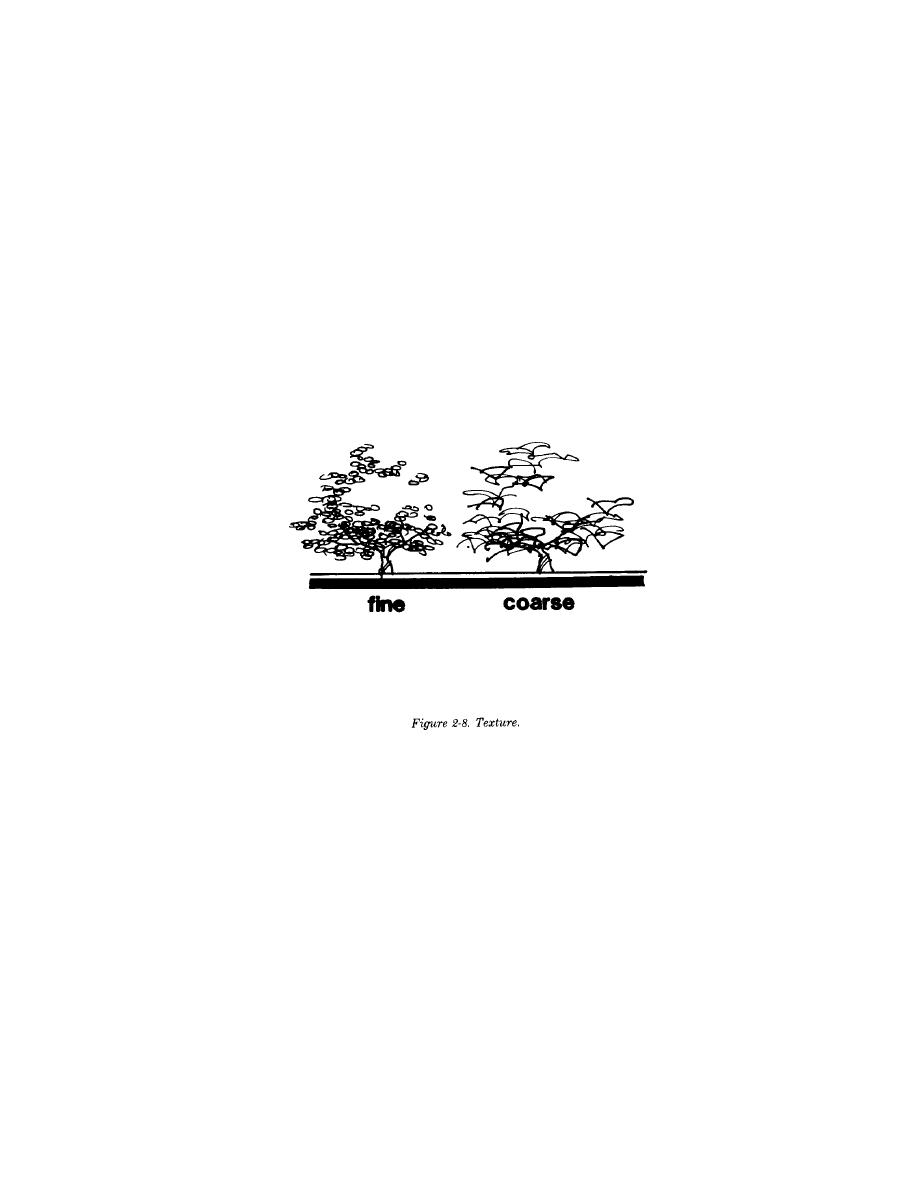
TM 5-803-13/AFM 126-8
2-5. Color and texture. The color and texture of
Masses of foliage or blossoms of a single color generally
plants can improve the appearance of an area. Because
have greater visual impact than a mixture of several
light, shade and the location of the observer affect the
colors. "One of each kind" is a design style to avoid. Care
perception of both color and texture, the amount of sun-
should be exercised to pick colors which are harmonious
light falling on plants should be considered in their
when seen together. Many deciduous plants provide a
placement. The appearance of plants with distinctive
source of color in the fall with brightly colored foliage.
texture or color will change depending on whether they
The brightly colored berries of some evergreens, such as
are seen with hack or front lighting, from a distance, or
holly, provide fall and winter color.
b. Texture of plant materials can range from coarse to
close-up. Plant surfaces may range from glossy to dull;
this affects their ability to reflect light and alters their
fine (fig 2-8). The texture of a particular plant may
appearance.
appear to change depending on the distance from which
a. Colors are classified in two basic categories: warm
it is viewed and its relationship to surrounding materials.
colors (red, orange, yellow), which are stimulating, and
A planting screen which is intended to serve as a security
cool colors (violet, blue, green), which are calming. Color
aid can be very effective if it is composed of rough,
can provide contrast or emphasis in a planting design.
thorny plants.
2-6. Simplicity. Landscapes should be simple in
should be used only where an immediate effect is
design so that excessive maintenance is not required. The
essential or where, in the course of time, they may be
shapes of shrub beds should be uncomplicated where they
removed as the space they occupy is filled by growth of
border mowed turf. Large power mowing equipment
more permanent plants. Tall plants should usually not be
cannot operate efficiently in areas cluttered with isolated
planted under windows. For example, evergreen trees cut
plantings. Hand trimming or the use of small mowers is
off light, air and views from windows unless they are
labor intensive and therefore costly. Lawn areas are
pruned at frequent intervals. Plantings in the vicinity of
simpler to mow if trees are confined to shrub beds or
traffic intersections should be low-growing or high-
ground cover areas. Ground covers or shrubs should be
branching so that they do not block the vision of passing
considered for use in areas that are small or difficult to
motorists. When limited budgets preclude the purchase of
mow.
large plants, it is usually better to plant the desired trees
and shrubs in smaller sizes and wait for the desired effect
2-7. Ultimate effect. Planting should be as perma-
than to compromise by substituting inappropriate species.
nent as possible. The ultimate effect must be kept con-
The use of even a few large trees can create an early
stantly in mind when selecting and arranging plants. The
effect of permanence.
final landscape plan should indicate the plants at
2-8. Spatial articulation. Plants can be used to
approximately two-thirds of their ultimate size to assist
in correct spacing. Short-lived plants which grow quickly
enclose spaces and to separate spaces from one another
2-5



 Previous Page
Previous Page
